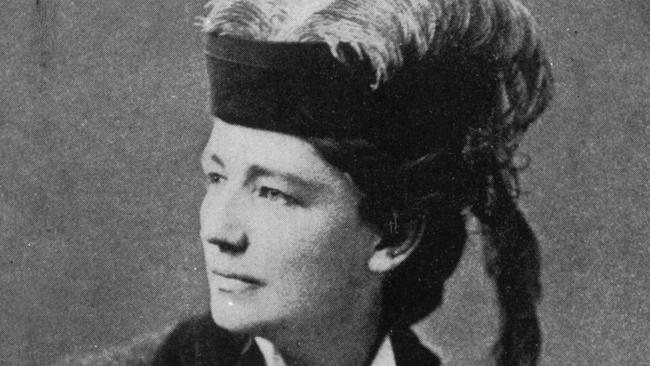Suffragists led the way for Hillary’s presidential bid
The first woman to throw her hat into the ring for the position of US president did so before women could even vote.

Today in History
Don't miss out on the headlines from Today in History. Followed categories will be added to My News.
While the US has elected an African-American president it is yet to vote a woman into the White House. Some pundits believe Hillary Clinton, who announced her candidacy on the weekend, could break the drought.
Clinton, who is familiar with the White House having lived there for two terms when her husband Bill was president (1993-2001), is not the first woman to announce her candidacy. That honour belongs to a woman who threw her hat into the ring even before women could vote.
Victoria Woodhull stood as a candidate for the Equal Rights Party, whose platform included equal voting rights for women. There were laws against women voting, but none stopping them from running for president.
Woodhull was born Victoria Claflin in Ohio in 1838 to poor parents who ran a travelling medicine show. It was at these medicine shows and during her career as a travelling clairvoyant that she honed her ability to work a crowd. She married Canning Woodhull at the age of 15 but they later divorced. She married again, to Colonel James Blood who offered her an introduction to society and the world of political reformists.
A meeting with wealthy financier Cornelius Vanderbilt during a spiritual consultation led to her being set up in a successful stockbroking business. She later began publishing a reformist magazine called Woodhull and Claflin’s Weekly in which she argued for voting rights and other social reforms. Her passionate public speeches led to her being elected president of the Equal Rights Party and she announced her candidacy for the 1872 presidential election.
Unfortunately her name didn’t appear on the ballot because, aged only 34, she fell short of the mandatory age for the presidency by one year. During the election she was held in prison on a charge of sending obscene material in the mail, of which she was later acquitted. Woodhull went to England where she continued her campaigns for social reform, writing several books. She made occasional return visits to the US but lived in England until her death in 1927.
At the time Woodhull was running for president, female lawyer Belva Lockwood was drafting legislation for equal pay and equal work for women employed by the government, which became law in 1872.
Born Belva Bennett in New York in 1830 she worked as a schoolteacher in her early years until she married at the age of 18.
When her husband died five years later she continued teaching and furthering her own education by studying law. In 1868 she married Ezekiel Lockwood and after two noted universities refused her application she was finally enrolled to study law at the National University Law School in 1871.
While studying she was active in politics, drafting the equal pay law, before graduating in 1873. Admitted to the bar the same year, she was not allowed to speak in front of the Supreme Court because she was a woman and in 1876 was denied admission to the Supreme Court. She lobbied successfully for the law to be changed and in 1876 became the first woman admitted.
Taking Woodhull’s lead, the National Equal Rights Party saw Lockwood as a natural choice to run for president in 1884.
An offer to prominent African American activist Frederick Douglass to be her running mate was politely declined and suffragist Marietta Stow ran for vice-president. She never stood a serious chance of being elected but as the first woman to appear on a presidential ballot she was a beacon of hope to suffragists everywhere and managed to get more than 4000 votes. Her claims of electoral fraud were never proven.
She ran again in 1888 but attracted fewer votes and returned to practising law and acting as a delegate to various international congresses on social reform, charity and peace. She died in 1917.
Women finally got the vote in the US in 1920 but it would not be until 1940 that another woman ran for the presidency — comedienne Gracie Allen. She had a kangaroo named Laura as her mascot and made daffy comments about policy. Standing for the non-existent Surprise Party she managed a respectable 42,000 votes. A similar, but slightly more serious campaign by comedienne Roseanne Barr in 2012 got her more than 67,000 votes.
But neither hold the record for a female candidate in a presidential election. That goes to the Green Party’s Jill Stein who surpassed Barr with 468,907 votes in 2012.



